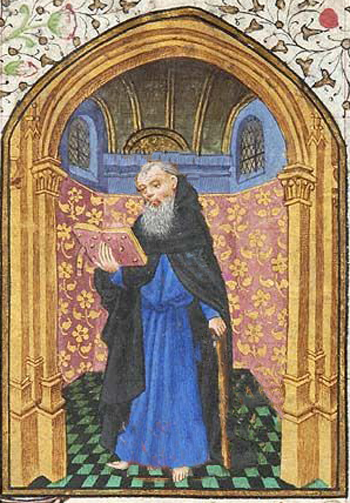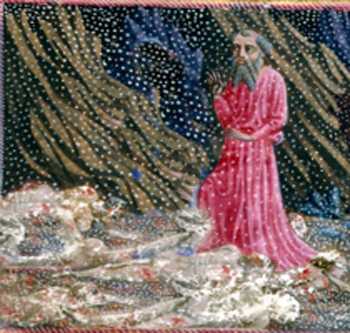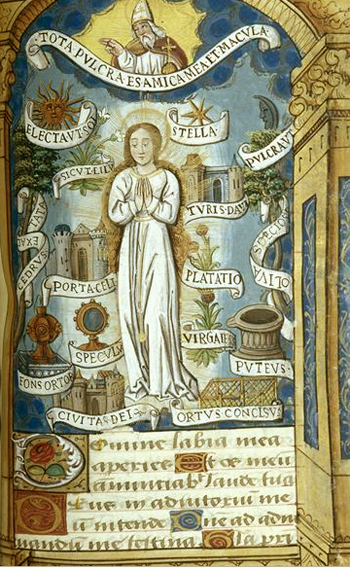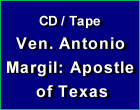Stories & Legends
 |
 |
 |
 |
 |
 |
 |
A Miracle at Sea
Aelfsige was named Abbot of Ramsey in 1080 and held that office there until his death in 1087.

Abbot & ambassador, Aelfsige was known & admired by both Saxons & Normans
So it was that William was particularly alarmed by a well-founded rumor that Canute was about to arrive on the scene to do battle. He sent off to Denmark the Abbot Aelfsige, a man of known eloquence and no small piety.
He was to put Canute off somehow if the story was true. If not, he was to report back. The ambassador took his instructions to heart, and, protected by the aid of the Mother of God, to whom he was especially devoted, had fair winds to take him over the sea.
In Denmark it was demonstrated how effective his eloquence was. Alone and a foreigner, he managed by the power of persuasive words to "loose the girdle" of Canute, who was ready to go to battle and, indeed, on the very point of departure.
But I cannot believe that Holy Mary did not give her help. With her shield ever protecting him, he was able to carry out his plan and come back home unharmed. However,the Devil did not allow the Virgin's servant a return as fortunate as his journey out, and tried in mid-ocean to spread a pall over the monk's happiness.
The miracle at sea
They set out to sea in fair weather and were cheerfully building on their success, when suddenly the winds turned treacherous and everything changed. The day grew dim, night came on fast, all the elements conspired to pour out their fury.
The sailors threw everything they had into the furious waters, but all went for nothing. Despairing of what man could do, they turned to prayer. Everything thought and known to be sacred was invoked.
The Abbot in particular called aloud on Holy Mary, "my helper, my protector, my patron." Those bowels of mercy could not be inactive for long. She who comes speedily to all who call on her did not delay.

A man appears on the waves & instructs Aelfrid to celebrate the Immaculate Conception of Our Lady
Aelfsige asked for the day and the rite, and the man answered: "December 8. The ceremony should be same as the Nativity, but with the word Nativity changed to 'Conception.'" The Abbot's heart leapt for joy and he gladly assented. The other thereupon vanished.
Fair weather immediately returned. The adverse winds became obedient once more, and after some days brought the ship gently over subservient waves to the coast of England.
Everywhere he could, and specifically in the Monastery of Ramsey where he then dwelt, Aelfsige taught the observance of that controversial Feast practiced by the Anglo-Saxons.
Aelfsige's miracle story spread throughout the 12th century and beyond and helped much to promote the celebration of the holy feast in England.

A medieval depiction of Our Lady flanked by the 16 emblems
of her Immaculate Conception, each with an inscribed scroll
honoring one of her titles
Adapted from The Miracles of the Blessed Virgin Mary by William of Malmesbury,
Trans. by R.M. Thomson and M. Winterbottom, Boydell Press: 2017, pp 50-51
Posted January 16, 2021
Trans. by R.M. Thomson and M. Winterbottom, Boydell Press: 2017, pp 50-51
Posted January 16, 2021



